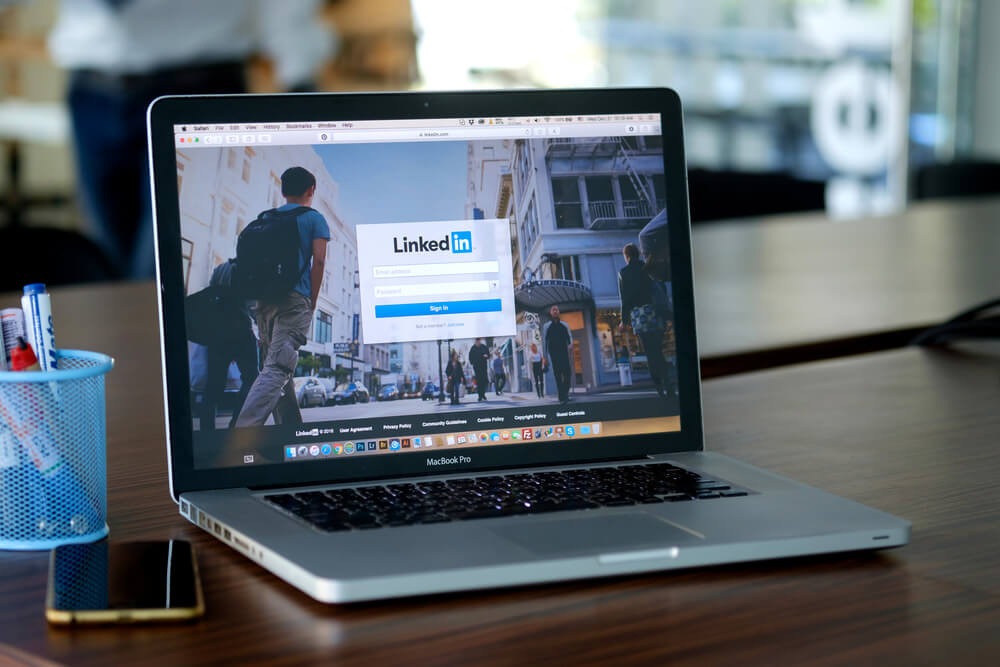Seven Tips for Creating a Professional and Polished LinkedIn Profile — For Law Students and Lawyers
 Seven Tips for Creating a Professional and Polished LinkedIn Profile — For Law Students and Lawyers
Seven Tips for Creating a Professional and Polished LinkedIn Profile — For Law Students and Lawyers
Given the prevalence of social media, it is not surprising that many employers are turning to LinkedIn to find new talent or—at the very least—using the site to “vet” potential candidates. So, for aspiring and current law students, young lawyers, and those transitioning positions within the legal field, having a polished and professional LinkedIn profile is integral to success and may help you gain an edge over your competition. Below are some tips to help you put your best face forward!
Seven Tips for Creating a Professional and Polished LinkedIn Profile
For Law Students and Lawyers
1. Create a LinkedIn Profile (or Maintain It)!
Are you still holding out on hopping on the LinkedIn bandwagon? Or maybe you have already joined the professional networking site, but rarely update your profile. Both are understandable–whether a potential law student or a seasoned attorney, we all have busy lives and finding the time to check all the items off our “To-Do List” can be daunting. However, the jury is in, and it turns out that failing to create and/or maintain a LinkedIn profile can hurt your chances for success in the job market. As Allison Cheston of Forbes.com explains, “LinkedIn [is] frequently recruiters’ first point of entry to a candidate,” and failing to cultivate a LinkedIn presence can be detrimental to your career search and your overall brand/reputation in your industry. A candidate who lacks a LinkedIn profile (or whose profile is outdated) may be viewed as lazy, unmotivated or disinterested by his peers and potential employers. So take the time to create and maintain your LinkedIn profile!
2. Select the Right Picture
Your LinkedIn profile picture is often your opportunity to make a good first impression and take control of your image. Like a handshake, the right (or wrong) profile picture can set the tone for future encounters with your employers and peers. So take the first step in creating a solid professional image by choosing and uploading the right picture. For many, the perfect picture will be your law school graduation picture or the professional headshots used for your attorney biography.
However, pre-law and law students who do not yet have professional photos will need to employ some creative approaches (but these approaches need not be expensive). If you fall into this group, you should first review the LinkedIn profiles of current attorneys to understand the image you are trying to achieve. After, select the appropriate attire; while it may be tempting to follow the latest fashion trends, you should, instead, opt for a pressed, neutral-colored shirt or blouse under a blue, dark grey, or black blazer. Many professionals suggest removing any face piercing or large earrings. However, women may wear a strand of pearls or a simple necklace. Then have a friend take your headshot (smartphones are fine) with a plain or professional background. Standing in front of shelved books, like at your university or–better yet–law school library, is a sure way to attain a professional look. Relax and smile.
3. Fill in the Blanks
Again, LinkedIn is frequently your first opportunity to present yourself to potential employers, so use it as your chance to personally hand them your resume and introduce yourself! As such, you should treat your LinkedIn profile as a job interview on paper. Take the time to fill in the blanks, including your education history and work experience, with dates of attendance/employment and all essential details. Of course, like a resume, you need not list every past job. Use your judgment and include your most relevant experience.
4. Remember your Audience
Keep in mind that LinkedIn is a professional platform. You should use it solely to achieve your professional goals and cultivate relationships, not to espouse your views about the current presidential candidates or the police officer who erroneously issued you a speeding ticket. While it may be tempting to use LinkedIn to vent your frustration, remember your audience and think before you post. If you wouldn’t share your thoughts with your law professor, mentor, or boss (unless you have a really cool boss), do not share it on LinkedIn.
5. Proofread!
For many, the importance of proofreading goes without saying. However, we frequently find grammatical, stylistic, and spelling errors on LinkedIn and in resumes (often passages from your resume can be copied and pasted directly into LinkedIn)! So remember, it can be difficult to proof your own writing. Print your profile and ask a trusted colleague or friend to review it, or–if all else fails–take a break, and, later, read it upside down (Yes, this helps the brain to spot errors!).
For current students who will be using their resumes to shape their LinkedIn profile, your university or law school likely has a career services office or faculty members who are willing to provide assistance in drafting and reviewing your resume and other professional documents. So don’t neglect to utilize this opportunity!
6. Be Outspoken
Once you’ve established your LinkedIn presence, it is socially acceptable to ask (and you should ask!) your close peers, friends and colleagues to endorse you for the skills you most value. According to William Arruda at Forbes.com you should:
[a]sk your contacts to endorse you for only your top skills. Having the highest number of endorsements for your signature strengths will influence those who are looking at your profile. Have the courage to delete or reject the endorsements that aren’t central to how you want to be known.(emphasis added).
So, for example, if you have limited knowledge of Microsoft Excel, but continue to be endorsed for this skill (like me!), it is perfectly acceptable to reject the endorsement and ask those you know to endorse you for a skill more suited to your knowledge and expertise.
7. Have Fun!
Yes, LinkedIn is a professional social media site. Yes, you should take it seriously and only use it to attain your professional goals and maintain/cultivate professional relationships. However, LinkedIn can be fun. Don’t be afraid to show your true self. Being professional doesn’t mean hiding who your are or trying to be someone different. It merely means putting your best, work-appropriate self forward. If you enjoy exercise, reading, or have a unique hobby, don’t be afraid to list it as an interest! LinkedIn is great opportunity to create or continue your professional presence, and that often includes showing the person behind the suit!






Comments are closed.